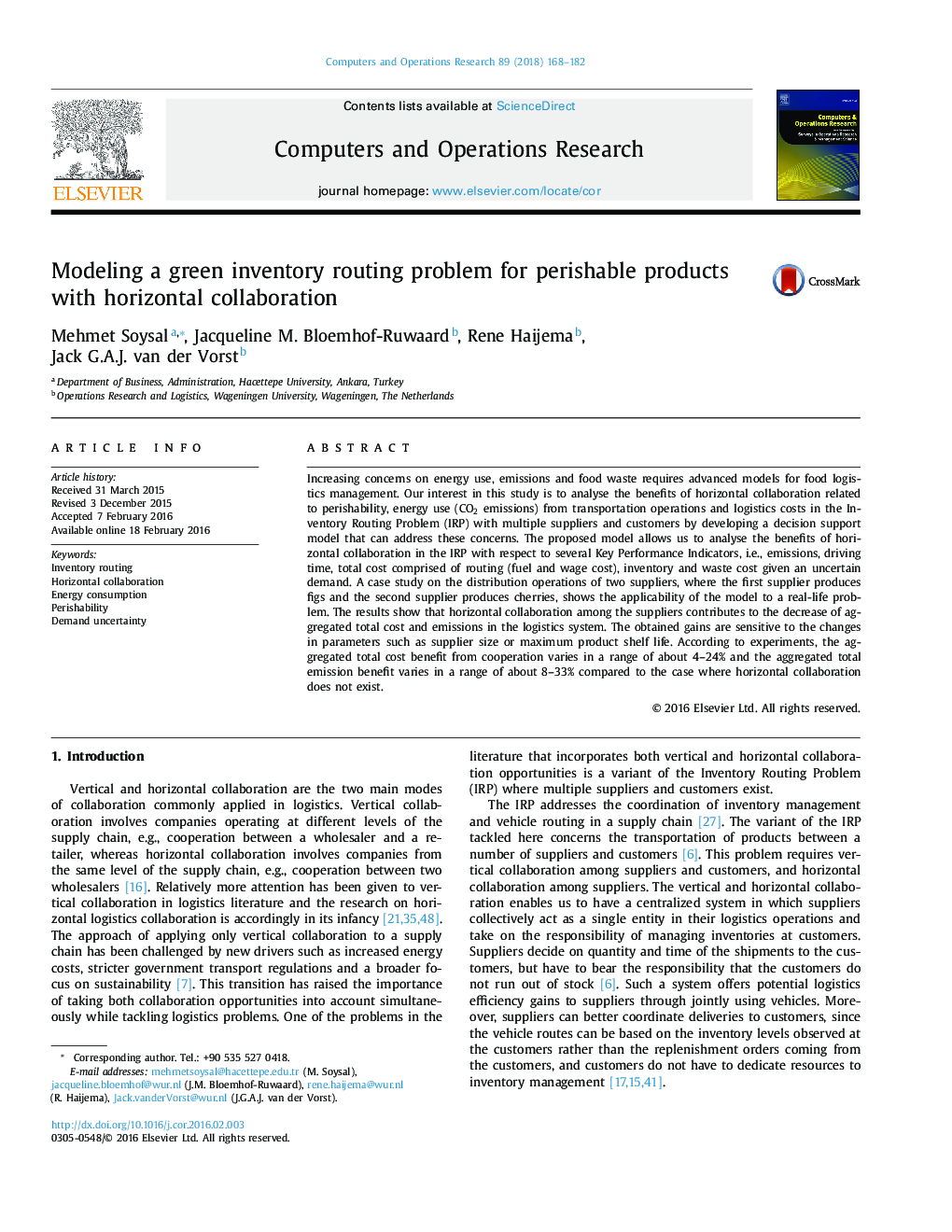| کد مقاله | کد نشریه | سال انتشار | مقاله انگلیسی | نسخه تمام متن |
|---|---|---|---|---|
| 4958961 | 1445459 | 2018 | 15 صفحه PDF | دانلود رایگان |
- A chance-constrained model for the multi-supplier IRP is presented.
- Model accounts for perishability, explicit fuel consumption and demand uncertainty.
- Model allows us to analyse the benefits of horizontal collaboration in the IRP.
- A case study on the distribution operations of two suppliers shows model applicability.
- Horizontal collaboration contributed to the decrease of total cost and emissions.
Increasing concerns on energy use, emissions and food waste requires advanced models for food logistics management. Our interest in this study is to analyse the benefits of horizontal collaboration related to perishability, energy use (CO2 emissions) from transportation operations and logistics costs in the Inventory Routing Problem (IRP) with multiple suppliers and customers by developing a decision support model that can address these concerns. The proposed model allows us to analyse the benefits of horizontal collaboration in the IRP with respect to several Key Performance Indicators, i.e., emissions, driving time, total cost comprised of routing (fuel and wage cost), inventory and waste cost given an uncertain demand. A case study on the distribution operations of two suppliers, where the first supplier produces figs and the second supplier produces cherries, shows the applicability of the model to a real-life problem. The results show that horizontal collaboration among the suppliers contributes to the decrease of aggregated total cost and emissions in the logistics system. The obtained gains are sensitive to the changes in parameters such as supplier size or maximum product shelf life. According to experiments, the aggregated total cost benefit from cooperation varies in a range of about 4-24% and the aggregated total emission benefit varies in a range of about 8-33% compared to the case where horizontal collaboration does not exist.
Journal: Computers & Operations Research - Volume 89, January 2018, Pages 168-182
